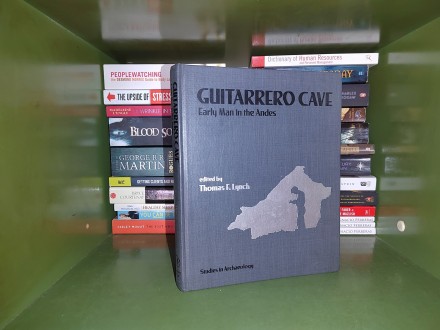Pećina Gitarero, Guitarrero Cave Early Man in Andes
| Cena: |
| Želi ovaj predmet: | 3 |
| Stanje: | Polovan bez oštećenja |
| Garancija: | Ne |
| Isporuka: | Pošta Post Express Lično preuzimanje |
| Plaćanje: | Tekući račun (pre slanja)
PostNet (pre slanja) Pouzećem Lično |
| Grad: |
Smederevska Palanka, Smederevska Palanka |
ISBN: Ostalo
Godina izdanja: 2222
Jezik: Engleski
Autor: Strani
Thomas F. Lynch
veliki fomat, tvrd povez, 35o strana,
The investigation of Guitarrero Cave was (at their time) the most well carried multidisciplinary attempt to get information about the first ocupations of perivian Andes and the subsecuent process. A lot of papers were published about the findings, covering several topics like plant domestication, cordage and textiles, lithics, etc. This book is a compilation of 12 contributions from the proyect investigators:
1 Setting and excavations
2 Stratigraphy and Chronology
3 Pollen analysis and paleoethnobotany
4 Vegetation and land use near Guitarrero Cave
5 Plant Remains from Guitarrero
6 Ancient peruvian highland Maize
7 Variation in cultived Beans
8 Faunal remains
9 Artifacts made from stone and other inorganic materials
10 Bone and Wood tools
11 Cordage, Basketry and Textiles
12 Guitarrero Cave in its andean context
There`s a lot of interesting material for the interested in southamerican archaeology, and for anyone who wishes to see a good sample of the application of multiple disciplines at once.
Guitarrero Cave has evidence of human use around 8,000 BCE and possibly as early as 10,560 BCE.[2] A human`s mandible and teeth found in the cave have been carbon dated to 10,610 BCE.[1]
Above all that, there were a series of Archaic period campfires, dated between 8,500 and 7,000 BCE.[2] Wood, bone, antler and fiber cordage were among the artifacts that were recovered from the level, as well as willow leaf, tanged, lanceolate, and concave base Ichuna/Arcata projectile points. A single grinding slab and a bone flesher were also recovered from this part of the area.[2]
Levels were included in the Early and Middle Horizon occupations, cist tombs, and wall paintings between about the 1000 BCE to 1000 CE.
In the 1960s, archeologists discovered artifacts in an extraordinary state of preservation at the site. Remarkably, textiles, wood and leather tools, and basketry have been preserved intact. Some of the evidence of early domesticated beans Phaseolus, chili, corn and other cultivars have been argued for Guitarrero.[2]
Fiberwork found in the cave dates back over ten-thousand years – the earliest found in South America. The cave held utilitarian containers made by twisting, looping, and knotting plant fibers.[3]
The people of Guitarrero Cave are possible ancestors of the Chavín culture.[1]
pogledajte i ponudu prodavca Spengler a ako tamo nađete nešto za vas, slanje i plaćanje će vam biti objedinjeni, takođe je besplatna dostava za 3 ili više predmeta.
Predmet: 70725413













